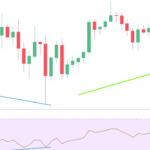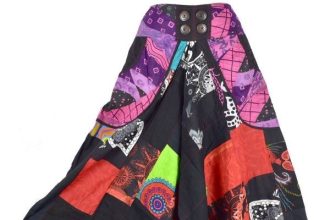As a parent you want the best for your children. From toys, education, food and clothes, you have lots of choices and are always looking for the best. When it comes to clothing, you want the best options, not only to look good, but to align with your values to sustainable clothes. In a world where fast fashion dominates, so finding sustainable clothing can be a challenge. The endless number of choices is not making it easy to shop for kids’ sustainable clothes. Here is our simple guide to sustainable children’s clothing.
Understanding the impact of fast fashion on Kids
Before exploring sustainable alternatives, it is essential to recognise the environmental and ethical surrounding fast fashion. Fast fashion refers to the rapid production trendy clothing designed to keep up with ever-changing fashion trends. While it offers affordability and variety, its impact on the environment, labour conditions, and overall sustainability is significant.
Key Impacts of Fast Fashion:
- Environmental Pollution: The use of synthetic materials and chemical dyes in non-organic clothing production contaminates soil and contributes to water pollution.
- Water Consumption & Contamination: The textile industry is highly water intensive. Since much of fast fashion production occurs in regions with lax environmental regulations, it leads to excessive water consumption and pollution of local water sources.
Why Choose Sustainable Kids Clothing?
The fashion industry is one of the most polluting industries globally, contributing significantly to waste, water consumption, and carbon emissions. This holds true for kids’ clothing, with many garments made from cheap synthetic fibres, dyed with harmful chemicals, and manufactured in countries with low labour standards. Fast fashion companies often rely on low-cost materials and labour, resulting in clothes that are not only of low quality but also harm the planet and its people.
Sustainable clothing, on the other hand, focuses on eco-friendly materials, ethical production processes, and long-lasting quality. By investing in these types of garments, you can help reduce the environmental footprint of the fashion industry and promote more responsible consumer behaviour. Additionally, many sustainable brands prioritize fair wages and safe working conditions for garment workers, making this an ethical choice as well.
Key Principles of Sustainable Kids Clothing
- Eco-Friendly Materials: Sustainable kids clothing often uses organic, natural, or recycled fibres. Here are a few materials commonly found in eco-friendly clothing:
Organic Cotton: Grown without the use of pesticides or synthetic fertilizers, organic cotton is less harmful to the environment and better for the skin. It uses significantly less water compared to conventional cotton farming.
Hemp: Hemp is a durable, biodegradable fabric that requires minimal water and pesticides to grow. It’s one of the most sustainable fibres, making it a great choice for kids’ clothing.
Recycled Polyester: Made from recycled plastic bottles or other polyester garments, recycled polyester helps divert waste from landfills and reduces the need for virgin plastic production.
Tencel/Lyocell: This fabric is made from sustainably sourced wood pulp, often from eucalyptus trees, which grow without the need for irrigation or pesticides. It’s biodegradable and produced in a closed-loop system that recycles water and solvents.
- Ethical Production:
Sustainable clothing brands typically focus on ethical production practices. This includes fair wages for workers, safe working conditions, and the avoidance of exploitative labor practices. Many sustainable clothing companies are certified by organizations like Fair Trade, which ensures that workers receive fair compensation and work in safe, healthy environments. When shopping for kids’ clothing, look for brands that prioritize these ethical standards.
- Longevity and Durability:
One of the defining features of sustainable kids clothing is its durability. Clothes made from high-quality materials are built to last longer, reducing the frequency with which they need to be replaced. This reduces waste and encourages a more mindful approach to consumption. Additionally, many sustainable brands design their clothes with features such as adjustable straps, extra seams, and removable parts to ensure they can grow with your child.
- Second-hand and Upcycled Clothing:
Another effective way to contribute to sustainability is by purchasing second-hand or upcycled clothing. Thrift stores, consignment shops, and online marketplaces such as Sonny Bear who offer a vast selection of gently used kids’ clothes at lower prices than buying new. By purchasing second-hand items, you can keep clothing in circulation longer, reduce demand for new products, and prevent perfectly good garments from ending up in landfills.
- Caring for Clothing:
How you care for your kids’ clothing also plays a role in sustainability. Washing clothes with care helps to extend their lifespan. Consider washing clothes in cold water, air drying when possible, and using a microfiber filter bag to capture microplastics that can be released into the water supply during laundry. Opting for gentle detergents and avoiding fabric softeners can also help maintain the quality of the fabric for longer.
Benefits of Sustainable Kids Clothing
- Environmental Impact: Sustainable clothing helps reduce the overall environmental impact of the fashion industry. By opting for eco-friendly materials, you are supporting farming practices that prioritize soil health, water conservation, and biodiversity. Sustainable fashion also minimizes the production of harmful chemicals and waste, which can pollute ecosystems and harm wildlife.
- Economic Value: While sustainable clothing can often come with a higher upfront cost, its durability makes it a cost-effective choice in the long run. High-quality, long-lasting clothes don’t need to be replaced as often, saving money over time. Moreover, buying secondhand or upcycled clothing can also be more affordable, enabling you to purchase high-quality items at a fraction of the cost of new ones.
- Health and Safety: Many fast fashion clothes contain harmful chemicals such as azo dyes, formaldehyde, and flame retardants, which can irritate sensitive skin. Sustainable kids clothing is generally free from these harmful substances, making it safer for your child’s health. Organic and natural fabrics also allow the skin to breathe better and minimize the risk of rashes or allergic reactions.
- Teaching Values: Teaching kids about sustainability at a young age is an investment in their future. By purchasing sustainable clothing, you can in still values of environmental responsibility, empathy, and mindfulness in your children. As they grow, they will understand the importance of making conscious choices that benefit both people and the planet.
How to Shop for Sustainable Kids Clothing
- Research Brands: Look for brands that prioritize sustainability and transparency. Many sustainable clothing companies provide information about their sourcing practices, production processes, and the materials they use. Brands with certifications such as GOTS (Global Organic Textile Standard) or OEKO-TEX Standard 100 can be trusted to adhere to strict environmental and safety standards.
- Opt for Timeless Styles: Choose clothing that is simple and timeless, as it will never go out of style. Classic designs and neutral colors tend to be more versatile, and they can be passed down or reused for siblings or friends.
- Buy in Bulk or Shop Smart: Kids grow quickly, and it’s easy to fall into the trap of constantly buying new clothes. Instead, buy quality over quantity. Invest in items that can be worn for multiple seasons, or buy a few well-made essentials and rotate them.
Conclusion
Sustainable kids clothing is a fantastic way to support a healthier planet and teach your children valuable lessons about responsible consumption. By choosing eco-friendly materials, ethical production processes, and durable garments, we can reduce the environmental footprint of the fashion industry and create a brighter future for the next generation. Whether shopping for new clothes, buying second-hand, or caring for the clothes your child already owns, every small change makes a difference.














